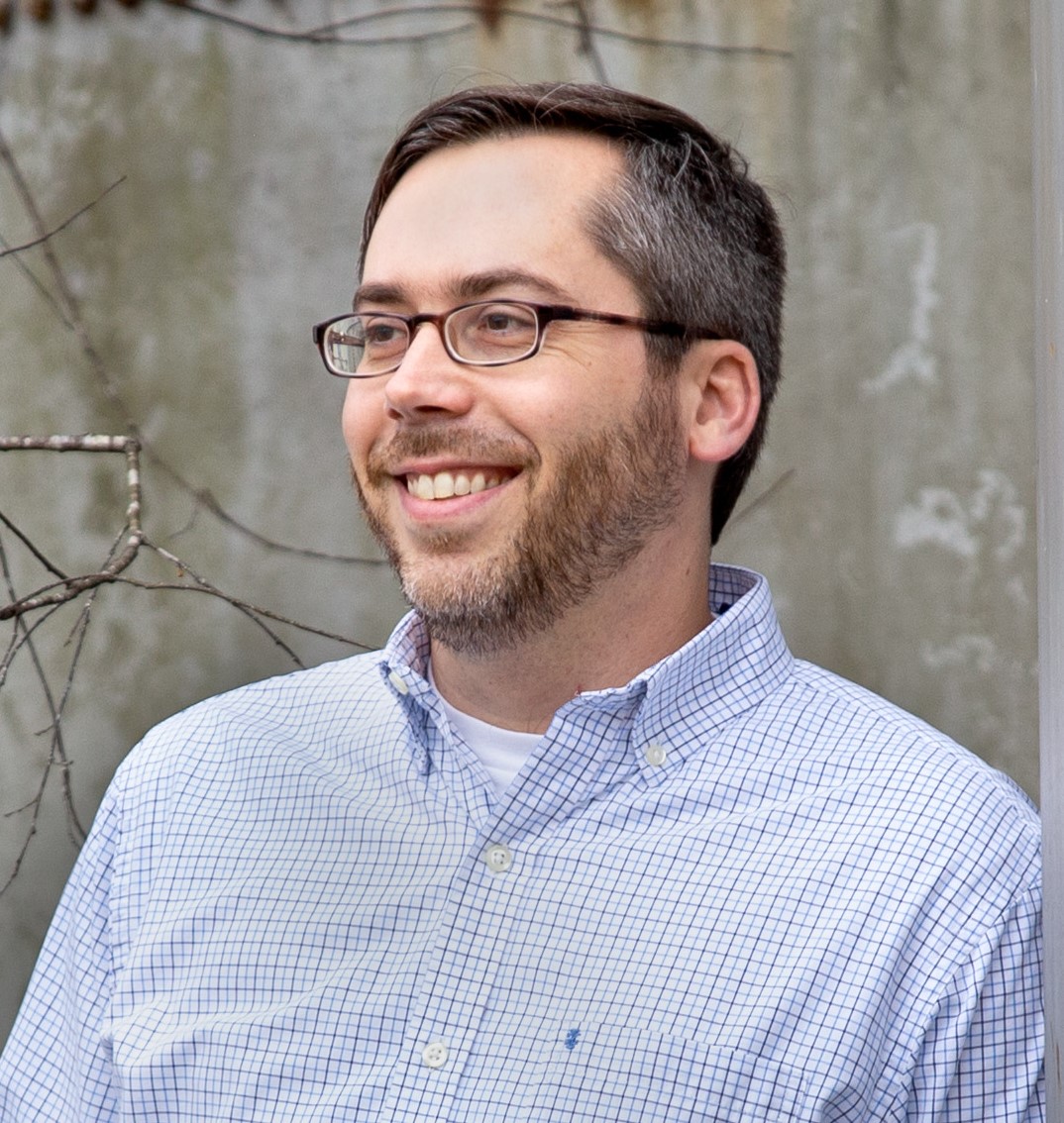“I've done so many things DIY with the Coheed comics and toys. Why should guitars be any different?” Coheed and Cambria on going it alone to make a signature guitar, channeling Joe Walsh – and the prospect of their swan song
The Father of Make Believe is another immersive long-form trip into the world of Coheed and Cambria’s fictional world. Claudio Sanchez and Travis Stever tell us what we're in for when we get there

It’s morning in Brooklyn where Claudio Sanchez, the mastermind behind Coheed and Cambria’s epic narratives and refined prog-punk sound, is sitting at a wide desk surrounded by the creative spoils of his life in music: synths of varying make and model stacked on a rack to his right, a regiment of amplifiers pushed against the walls, and of course, plenty of guitars at the ready.
This is Coheed’s inner sanctum, the small room where the band’s Amory Wars and Vaxis storylines are set to riffs, and where Sanchez and co-guitarist Travis Stever laid down the guitar tracks and Sanchez produced the band’s latest album and third entry into the Vaxis saga, The Father of Make Believe.
It’s a quantum leap from the early days, when Sanchez demoed songs for the band’s 2002 debut The Second Stage Turbine Blade on a four-track cassette recorder. Yet surprisingly, that decades-old relic of home recording, a Tascam Portastudio, also played a role in making album number 11 in the Coheed and Cambria canon.
“I've actually just started implementing [the four-track] back into the process so I could step away from the computer,” Sanchez says. “This computer is where I do all the recording most of the time, so I try to break out of that and get some perspective, create other situations.”
Those songwriter sessions led him to a crucial crossroads. Although people and situations from his personal life appear throughout the Amory Wars storyline, songs like Goodbye, Sunshine find Sanchez questioning his own arc within the band’s story – a metaphysical quandary that carries through to The Continuum IV: So It Goes, whose titular line references a phrase used repeatedly in Kurt Vonnegut’s 1969 anti-war novel Slaughterhouse-Five to reference a person’s death.
So, does this mark the end of the Coheed story? Or Sanchez’s role in the narrative?
“I see myself in this character, because this character has the opportunity to start something completely fresh and new,” Sanchez says. “And I think that's where this theme of, could this be the end, or more like the metamorphosis into a new beginning? Of what that is, I'm not sure.”
All the latest guitar news, interviews, lessons, reviews, deals and more, direct to your inbox!
Fandoms exist to analyze these and much finer points of the band’s lore – and there are plenty of them. But, of course, Coheed isn’t just a vehicle for Sanchez to explore existentialism and create novels set to music. It’s also a kickass prog-punk band with a water-tight rhythm section and guitar riffs galore courtesy of Sanchez and Stever, his axe-wielding foil in the intergalactic saga.
While some fans obsess over the elaborate backstory, guitar heads are listening with headphones on to the even more captivating sonic world. And Sanchez and Stever layered guitar ear candy all over The Father of Make Believe.
On the muscular power-pop of Goodbye, Sunshine, ascending and descending leads behind the chorus add color and dimension, while dizzying fretwork ratchets the tension on the driving Searching For Tomorrow and The Continuum I: Welcome to Forever, Mr. Nobody, the first installment of a four-song suite to close the album.
And the sonic adventureness extends beyond stomp-box fever. “I did the opening song [Yesterday’s Lost] with one of those parlor Gretsch guitars,” Sanchez says. “I wrapped a rubber hose around the bridge to sort of mute the strings, give it a very dead sound – that very plucky kind of vibe.”
Beyond raging aggro-riffing, the duo also explored the band’s softer side on songs like the soaring Meri of Mercy and acoustic guitar-led Corner My Confidence. The song cycle ends on a decidedly different note on the aforementioned So It Goes, a kaleidoscopic, Queen-esque orchestration of guitars, piano and strings.
We talked with Sanchez and Stever, the unapologetic guitar-nerd braintrust of Coheed and Cambria, about the making of their latest opus.
This time, I wasn't writing for a record – I was just writing just to express myself for release, for therapeutic reasons, maybe
Claudio Sanchez
Take us behind the creation of ‘The Father of Make Believe.’ Did the song cycle come together in the same way as past Coheed albums?
Claudio Sanchez: “This time, I wasn't writing for a record – I was just writing just to express myself for release, for therapeutic reasons, maybe. I wrote a lot of the songs here [at home], a couple of them in Paris. My wife and I took a writing retreat, and Blind Side Sony and Meri of Mercy I actually wrote out there.
“But for the most part, I didn't have a sonic sort of idea. When I had about 30 songs, I started to listen to them and I found a connection in the ones that really sort of revealed to me what I was going through and maybe what would inform this part of the concept.
“It felt more like when I was younger, when we didn't really fall into the routine of writing albums. We were young, we wrote music and somebody was interested so we collaged them together, and then my insecurities went and created a concept over it, taking whatever story of my life was happening at that time. And that's kind of what this felt like, not in a premeditated way, just kind of a happy accident.”

Writing and recording music at home has its benefits, but there are potential drawbacks for making a big rock record in that setting. Were you limited to amp sims, for example, or did you use live amps?
When I'm demoing or initially writing the idea, [I’ll think] what kind of song is this, and what is it going to call for? Is this more atmospheric? Is it more of an aggressor?
Claudio Sanchez
Sanchez: “It's a combination of everything. Typically when I'm doing amp stuff in this house, I'll use combo amplifiers, like a [Fender] Blues Junior or my favorite, a Peavey Special 130. I just like the way they take pedals.
“I also have a [Fender] Twin Reverb down there, a vintage Ampeg Jet, and a Peavey Decade. I also have a storage unit a block away where I have another combo, a Peavey Deuce. I didn't use any big amps, nothing loud, on this record. I do like UA effects pedals. I have the one that emulates the Super Lead. Those sound really good, so I'll use those, or if I go straight into the box, I'll use Guitar Rig or something.”
Travis Stever: “He's got a massive pedal collection. I don't even have to bring mine. He's got everything I’ve got and beyond.”
Sanchez: “I have everything here, so when I'm demoing or initially writing the idea, [I’ll think] what kind of song is this, and what is it going to call for? Is this more atmospheric? Is it more of an aggressor? Then I'll play with that. There are moments where it's like, oh, let's keep it pretty. Let's keep the sounds familiar, or let's fall outside of that and add something a little bit more unique to it. I want to have fun.”
Do you have a process for tapping into guitar ideas you feel are unique?
Sanchez: “It's always changing. I've got a little rig in the basement that's more sample based that I'm putting together just to get new perspectives. But yeah, it's always sort of the process. There is a nucleus to the process, but sometimes that feels stagnant. So I try to break out of that.”
How did you work together and figure out the guitar parts?
Sanchez: “For me, it's not about parts. I'm a songwriter. I sit here, I write songs, and then I pass 'em around to the band. And as I get older, I'm very conscious of where the melody is and the things that will disrupt that.
“Sometimes I will construct the counter melodies because I just know the choice of notes that I think are appropriate to support the message of the song. So when Travis comes through, it's usually he comes here, he'll send me some of his ideas, and I'll sometimes even edit them together into a structure that I think kind of works. And then he'll come here and we'll sort of approach it together.”
Stever: “On this record specifically, there was a lot of that that came pretty late in the game in the songs that he had. It's almost like my aim was to come in with ideas and melodies that maybe he hadn't thought of yet or that helped heighten the vision of what he had for the song already.
“I would come in and have a shitload of ideas, and then we take it from there. There are times where he's like, ‘That's not what I was thinking there.’ And then we work on it, and it's almost like we're collaborating on a song within the song. Becoming the producer that he is now, he has everything at his fingertips. He can add anything.
“So, it's almost like a restraint for him, I would imagine, as a songwriter to say, “You know what? I'll wait and see what Trav does here.’ He'll hear me fiddling with something and it'll open a new gate within that song of where it can go, and then we're off to the races.”

Travis, how did you find your place in Claudio's songs on this album?
Stever: “I don't think it changed the song by any means, but he had this song [So It Goes] that I loved already, and I wanted to bring something like Queen meets the Police meets the Beatles kind of guitar. We were fiddling with one part where I didn't even think to do a lead kind of thing, and he was like, ‘Do a little solo there, add some Joe Walsh.’ And I'm like, oh, he's speaking my language.
“I don't like to be the person that relates music to other music – I'm trying to break that, but it's super difficult because that's how I've lived my whole life. I want it to sound like so-and-so. For some reason, I can't break that habit. He knows that, and he'll throw a name out there and it'll be like, oh, I hear what you mean.
“Tethered Together” is a song that I love, and I just played on a lot of the vocal stuff, but I definitely thought I brought a different identity to the verse. That more delicate, fingerpicky kind of stuff. It's interesting, because I bring that kind of stuff to his more metal [songs]. It's like we switch roles.”

Claudio, you had a new guitar for this record, your signature Evil Instruments Jackhammer.
Sanchez: “It’s sort of a hybrid of the two guitars that I've used with Coheed, which is like an SG Special and an Explorer. I've done so many things DIY with the [Coheed] comics and toys and this, that, and the other thing, and I was like, why should guitars be any different?
“So, I was on a flight one day and I broke open an application and I sort of collaged together the shape, and I sent it to my guitar tech who was also a luthier, and I was like, Hey, do you think you could build this? I'm considering the idea of doing my own thing. He put together a kind of working prototype.
“The neck was a little wonky, but it was enough for me to envision this as a real thing. I like the way it plays. I like the shape. It still feels very much me. So, we started working with Dunable to construct a line of my own called Evil Instruments, and the guitar is called The Jackhammer, and that's the first one.”
A post shared by Coheed and Cambria (@coheed)
A photo posted by on
Did you take the neck radius or other specs from your Explorer or SG?
Sanchez: “Yes, from my Gibson E II. The pickups are Bare Knuckle Nailbombs.”
Travis, what electric guitars made the cut this time?
Stever: “I've got an '81 Les Paul Custom that became my favorite guitar. I don't even tour with it now, but I brought that in to record. He also has an SG that I used for a couple of things, and it sounded fantastic. So it's between those two guitars, I'd say, on the whole record, but for the most part, I brought in that Les Paul. I have [another Les Paul] that's made it to every other record, a gold top with a Bigsby that I've always used, so the '81 kind of took over for it.”
Claudio, did you intend to give the impression with your lyrics on this record that Coheed is done?
Sanchez: “It’s funny. As I get older, that is a big question. I ended the record with a song called So It Goes. It’s a term in Slaughterhouse-Five by Kurt Vonnegut, and a lot of that book has informed themes in the Coheed universe, whether it be the idea of free will or the character of Vaxis seeing all times at once. It's very reminiscent of Billy Pilgrim's situation [in the novel].
“But it's tough to say: do I want my identity as Claudio of Coheed to end, or is it the end of the grandiose concept component of Coheed? I'm never going to say never. I'm not going to be completely finite about that concept of Coheed coming to an end, but I do like to toy around with it. That's part of the expression of this record, I think for sure. And it can't be, because there's two more records to go to conclude the Amory Wars. So we’ll see.”
- The Father of Make Believe is out now.
- This article first appeared in Guitar World. Subscribe and save.
Jim Beaugez has written about music for Rolling Stone, Smithsonian, Guitar World, Guitar Player and many other publications. He created My Life in Five Riffs, a multimedia documentary series for Guitar Player that traces contemporary artists back to their sources of inspiration, and previously spent a decade in the musical instruments industry.
You must confirm your public display name before commenting
Please logout and then login again, you will then be prompted to enter your display name.







